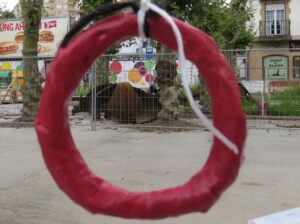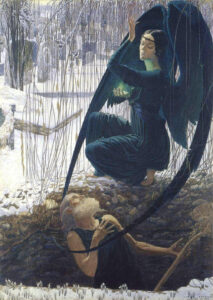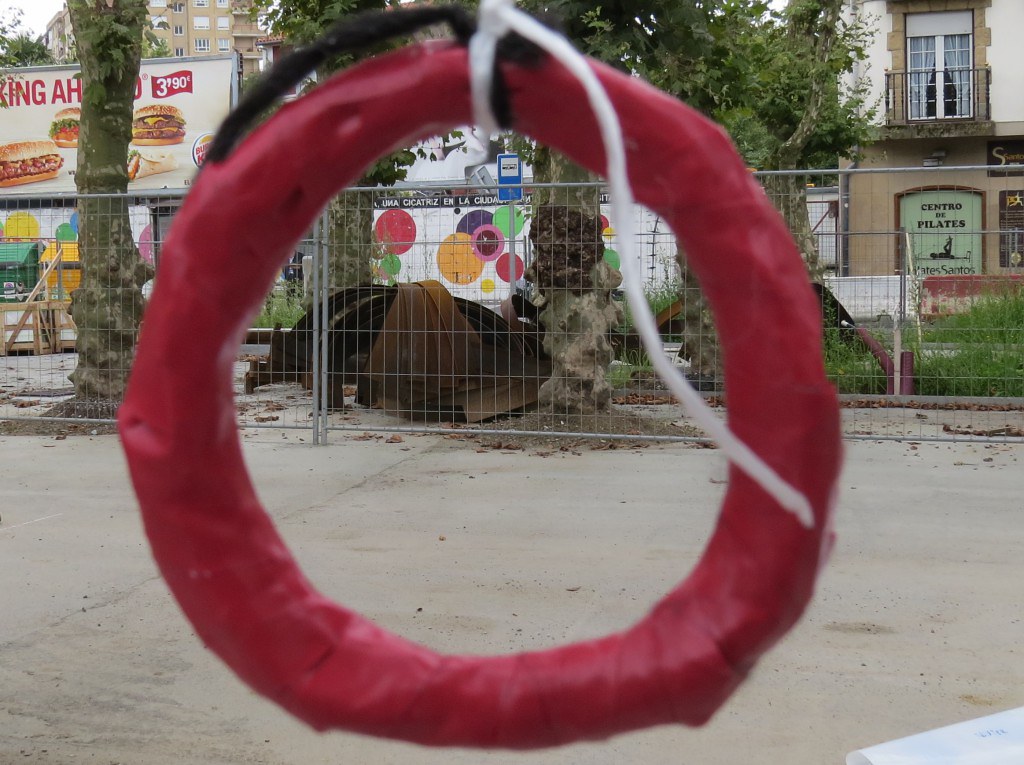
I’m still pondering Charge of Flowerdew’s Squadron, 1918, by Sir Alfred Munnings, about which I wrote on Monday. I’m usually focused on the terrified horses, but I realized that the figure in the foreground is Lt. Gordon Flowerdew himself. He was just 33 when he was mortally wounded at the Battle of Moreuil Wood, urging his ‘boys’ on until he expired. The Canadian Cavalry Brigade suffered disproportionately in a war that had nothing to do with them, but for which so many of their young men and women volunteered. Whatever his intentions, Munnings painted a powerful polemic against the sheer wastefulness of war. I fight back tears every time I study it.
Fast forward to the our own times, when young climate activists vandalize museum masterpieces and throw charcoal into the Trevi Fountain. Some people think these kids are earnest and well-meaning; the majority think they’re spoiled brats.

I’d say they’re acting out the single-minded narcissism of youth on a convenient public stage. On a much smaller scale, I did that myself 45 years ago.
In my late teens, I protested the building of a coal-fired electrical plant, including cooking up an almost-completely spurious historic-preservation argument. Of course, I had no impact whatsoever.
I’ve watched the plant go through its entire life-cycle (it closed in 2020 as part of our push away from coal). It created jobs and generated millions in tax dollars, so that the small local school could be updated into the 20th century. It was built with state-of-the-art-scrubbers. I had no hesitation living for 21 years downwind of its plume.
Today I happily admit that my youthful self was dead wrong. Young people have heart and a profound need to make their mark in the world. However, they’re not noted for their ability to see nuance, which is why we don’t generally put them in charge of policy decisions.
Vandals at the gate
Just Stop Oil are performance artists themselves. However, their performances are rich in meaning, which is a step up from much art made in the last century.
What is meaning? Traditionally there were different layers of information in artwork, including intellectual and emotional content, style and technique. Together, these formed meaning.

Intentionally meaningless art (Dada) can be traced back to the early 20th century, as a response to the senseless violence and destruction of WW1. The philosophical ideas of existentialism influenced art at the same time. Symbolism may, at first glance, seem drenched in meaning, but it’s really all about archetypes.
Marcel Duchamp turned everyday objects into art (‘readymades‘) simply by putting them in galleries. Changing their location changed their status. There’s a direct line between his urinal (1917) and Maurizio Cattelan‘s banana taped to a wall (2019). What’s sad is that there wasn’t a single advancement of that once-startling idea in the intervening century.
With the exception of outliers like Just Stop Oil, conceptual and performance artists further promote the idea that art is meaningless. Give Yoko Ono credit here-not only did she contribute to the breakup of the most famous musical ensemble of the 1960s, she was also a major conceptual artist. Rarely has one individual had such a destructive impact.

Let’s reclaim meaning
Of course, most of us could never really leave meaning behind; it’s hardwired into the human brain. However, if we were at all au fete during the past century, we were a little ashamed of that. The Wyeth clan stand out as artists who bucked that trend.
But if a painting doesn’t say something, what good is it? This weekend I realized there’s a hunger for meaning and depth in painting when my class on narrative painting sold out almost immediately. I’ll let you know how it goes.
My 2024 workshops:
- Painting in Paradise: Rockport, ME, July 8-12, 2024.
- Sea & Sky at Schoodic, August 4-9, 2024.
- Find your authentic voice in plein air: Berkshires, August 12-16, 2024.
- Art and Adventure at Sea: Paint Aboard Schooner American Eagle, September 15-19, 2024.
- Immersive In-Person Workshop: Rockport, ME, October 7-11, 2024.


Re: Performance art, you may enjoy Reverend Billy’s work. His group blends art, theater and music with humor to protest sweat shop labor, racist and exploitative lending, nightmare pesticide and herbicide development and more.
Re: Youthful Protest, don’t be so hard on your own youthful protest, you were right in the long run as coal fired plants pump out mercury which is present in every lake in the U.S. and creates more carbon pollution than anything else burnt for fuel. Your youthful self did show poor judgement cooking up spurious data to support your case, though!
Never would I have cooked up spurious data; I cooked up a spurious argument!